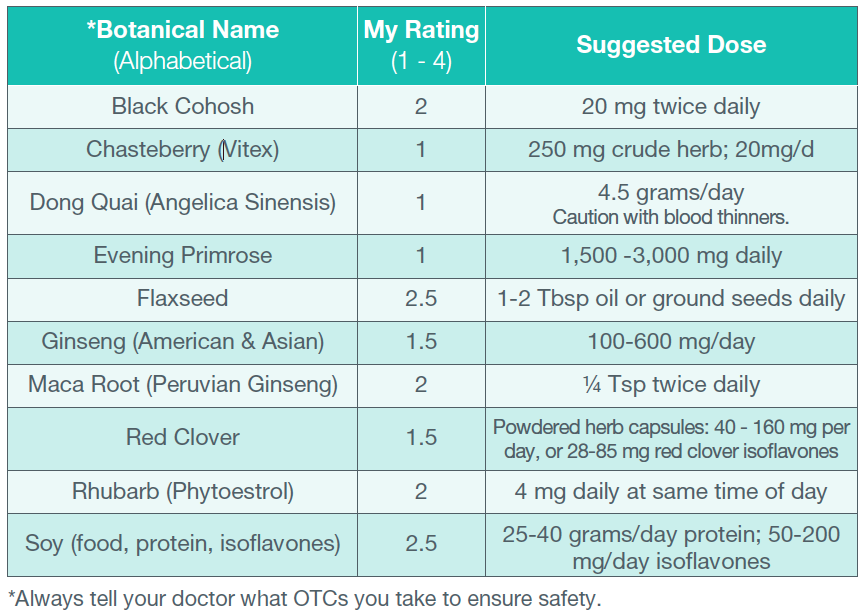Drug stores are filled with over-the-counter (OTC) hot flash remedies. Here are 4 OTC concepts to consider before you start.
1 Set your expectations. OTC remedies often take 1 to 3 months to work.
2 Keep an open mind. None work for all and all work for some. So try one for 3 months, then another one for 3 months. Find what works for you. Every woman is different, and what works for you may not work for the woman who said, “It didn’t work for me.” Don’t listen to this; it may work for you.
3 Most OTCs last no more than 12 hours and should be taken twice daily, 12 hours apart. That will help you have a more sustained effect.
4 The goal is to reduce symptoms so they become tolerable
Hot Flashes Remedies
Supplements often lower but seldom eliminate hot flashes
1 Black Cohosh: Black cohosh is very common. It comes in dosages of 20 milligrams taken in divided dosages twice a day. You can take it either separately as Remifemin, or as an ingredient in combination products. Some studies have found black cohosh effective; some have been less favorable. If you try it, it may work for you.
2 Soy: I think soy is a great choice for hot flashes. Not everyone agrees be- cause not every study has shown that soy lowers hot flashes better than a placebo; but in many, it does. Expect about a 30% to 50% reduction in frequency and intensity. That may be enough to make a huge difference in the quality of your day and in the quality of your sleep.
You can take soy as a supplement, usually between 50 to 100 milligrams but no more than 200 mg a day. A typical dose is one in the morning, one at night. Soy is also an abundant food – soybeans. tofu, soy milk and many more. Studies suggest between 25 to 40 grams a day. That’s also a good amount for lowering cholesterol, bone health and heart health.
3 iCool: iCool is a proprietary isoflavone. It’s not soy; it is a specific one that the company has made. There is one study showing iCool lowers hot flashes. iCool is also available with vitamin D.
4 Estroven: Commonly used containing soy, black cohosh, vitamins, selenium and magnolia bark plus a proprietary blend. Any women find it helpful.
5 Flaxseed: Flaxseed is terrific. It’s another example of food that is “medication.” Make sure the seeds are ground or pressed into oil. Usually it has to be refrigerated so it doesn’t turn rancid. I suggest my patients add between 1 and 3 table-spoons to food. Many women add it to cereal.
6 Vitamin D: Finally, anecdotally, I want to mention vitamin D. If you are in menopause, have a low vitamin D and are experiencing hot flashes, I have found that replacing the vitamin D until levels are normal has either reduced or eliminated hot flashes in several of my patients. Know your vitamin D level.







